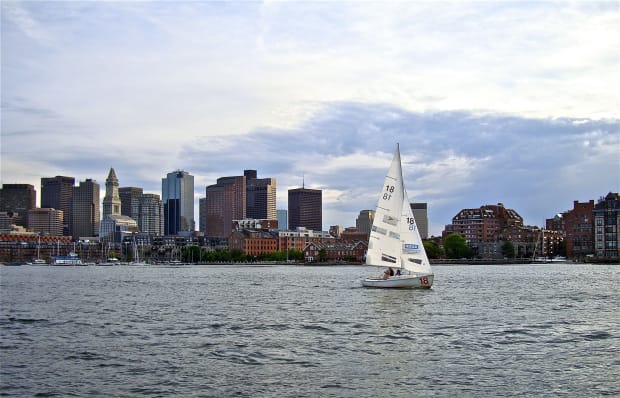
Photo courtesy of Courageous Sailing Center
Whether they’re at the end of their collegiate career or after aging out of a summer sailing program, a lot of young sailors have a hard time finding a way to continue sailing as adults. Some of the barriers to sailing, including location, finances and time, can be hard to navigate when you’re living on your own for the first time. Even with a community as friendly as sailors, it can be hard to know where to start or how to continue. What follows are the stories for young sailors who succeeded in figuring out the kind of sailing that was right for them.
Living Aboard
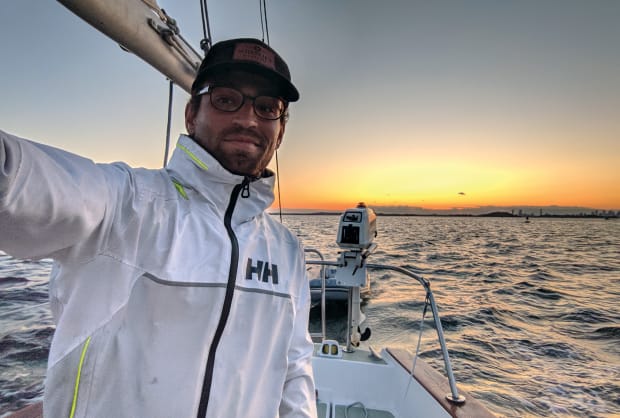
Photo courtesy of Lexi Ossinger
“I was working for a tech start-up, and I wasn’t making a ton of money, so I needed a cheap place to live. I heard from somewhere that people were living on boats in the harbor for cheap,” says Boston sailor Lexi Ossinger. Looking at ads for used boats, he also realized that they were more affordable than he imagined. The brokers he spoke to, though, told him to get a slip first, explaining in Boston people can wait years to get a good slip in any marina.
“I started calling around, and there was one marina left that said, ‘Yeah, I got one slip left, but it’s the worst that we have. It’s super narrow and long, and it’s next to the pier. You don’t want it.’ I’m like, I’ll take it! I don’t care what it is. I’ll take it,” Lexi says. After that came the boat. With a narrow and long slip, a sailboat made the most sense. Lexi bought a Pearson 30 and made it his home. It wasn’t until a few months later when the marina asked him to move to a new slip, that he tried to sail it for the first time.
“I asked a friend who is good with boats, ‘Hey, can you come down and look at my boat and start the engine?’” Lexi says. “He said yeah, of course. He’s a sailor, so he’s like, ‘Oh, you got a great sailboat to learn on here. You’ve got brand new sails and the engine works great, and all that kind of stuff.’”
Lexi’s first sailing trip was even more exciting than he expected, and he was hooked. For anyone else interested in his way of living, he says finances are dependent on how you use your boat. For example, if you’re just using it as a floating apartment, it can be pretty inexpensive. “If you [also] want to use your boat for sailing,” he says, “it’s pretty similar, if not a little more expensive than living in an apartment. But you live on the boat, and you get to have a hell of a time.”
As for boat maintenance, Lexi says that is in many ways the hardest part of living on a sailboat. “With boats and being in the real world, you drill a hole in the wrong place, and it’s gonna take you hours to fix that,” he says. Lexi adds it’s very much a lifestyle that best suits people looking for adventure, who don’t want to live traditionally. “It’s more people who kind of want to march to their own beat of their own drum,” he says.
Community Sailing Centers
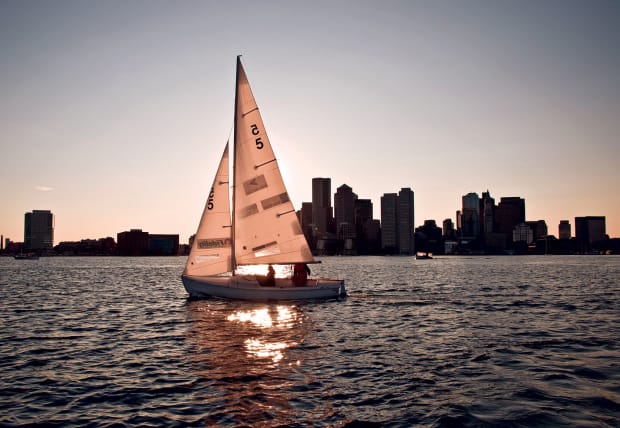
Photo courtesy of Courageous Sailing Center
Alexe Taylor is the Youth Director of Youth Programs and Outreach at Courageous Sailing in Boston, a community sailing centers, that like most sailing centers, was created for the express purpose of making sailing a more affordable and accessible sport.
“The shared mission is really to provide access to the waterfront and to sailing for a really diverse population of people and really, to encourage public access sailing, as opposed to private sailing that you have to join a yacht club to participate in,” she says.
At Courageous Sailing, there are no fewer than seven kinds of memberships in three different categories, so sailors can pick the best choice for them and what they want to get out of the center. At $300, the least expensive membership allows access to the center’s fleet of Rhodes 19’s for a 30-day period, roughly similar to the cost per month of many specialized gyms in the area. The second category provides weekday or full week access to the center’s J/80s and Pearson 26s. A third is a weekday cruising membership allows members full access to all the center’s boats, an include to option of taking trips around the Harbor Islands and overnights.
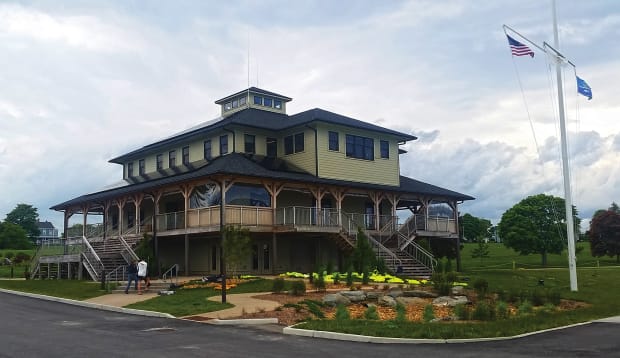
Photo courtesy of Courageous Sailing Center
Courageous Sailing also offers a number of comprehensive learn-to-sail programs for both children and adults. According to Alexe, the adult programs, in particular, cover a wide range, catering to everyone from people who are still learning to sail to those interested in bareboat chartering and coastal cruising.
Socially, the community sailing center model also offers a wealth of events to attend and other opportunities to get to know your fellow members in a family-friendly environment. “We have a lot of barbecues and cookouts on the pier, which is really nice because they’re focused around community and gathering,” she says. “It’s much easier for that to be a family friendly event that is more age inclusive and more inclusive of people who might be interested in the community aspects but less than drinking.”
In sum, Alexe says, the sailing community center model make a good for “those people who are excited to continue sailing, but want to find more people to sail with. And for people who maybe don’t have access to those more traditional sailing pathways of boat ownership or Yacht Club membership, community sailing can be a significantly lower cost access point and a more social access to get that foot in the door and to be able to get out on the water.”
Windjammers
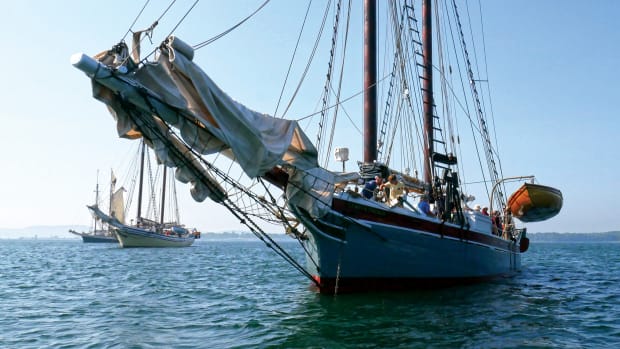
Photo courtesy of Lydia Mullan
Erin Nolan grew up familiar with being on the water, but she wasn’t a sailor. Her dad is a fisherman, and she sailed J/24’s for a season in high school. It wasn’t until college, though, that she became familiar with the Maine Windjammer Association.
“I came to Maine for college, and my best friend was a sailor. He started sailing up here, and I came down to visit him and ended up getting a job. Once I started, I realized it was perfect. It was like, what I was made to do.” Erin says. At the time she was 19-year-old. She has stuck with it for six years now.
“I always tell people, when they’re starting out your first season, you just have to figure out where to put yourself. You don’t have to worry too much about why things are happening. Just find where you’re supposed to be and what you should do,” she says, noting the work is year-round, whether you’re sailing all year or doing boat maintenance in the winter.
“All the maintenance work is happening now before passengers come on board—it’s two months of a lot of sanding, a lot of painting and tarring the rig. I didn’t use to like it very much. But I’ve got a knack for it now and I enjoy it.”
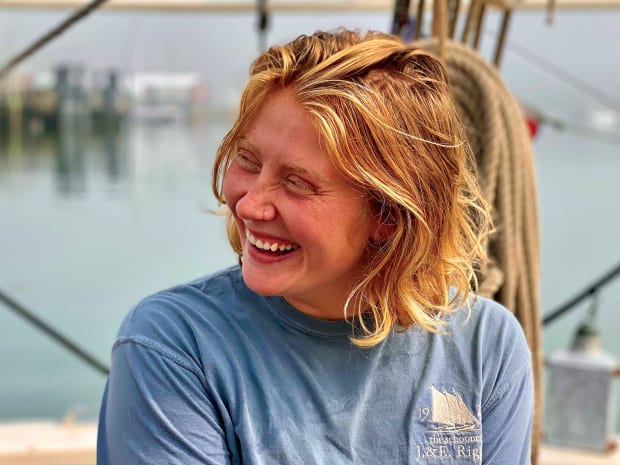
Photo courtesy of Erin Nolan
According to Erin, another nice part of the job is the fact you’re part of a small community with a great sense of camaraderie. “If you meet another sailor up here, you already have so much in common,” she says. “No matter where you’re from, what boat you work on, you’re doing the same unique job, and you have some of the same horror stories and accomplishments. So right off the bat, you have this connection that not many other people have with you.”
Erin adds there are a number of different paths you can take when working on windjammers. Some like to chase the season year-round, traveling to places like the Mediterranean and Caribbean as part of a windjammer crew. Others prefer to stay in one place, like Maine, and do the winter work necessary to keep the boats in sailing condition.
Like living aboard, Erin says the lifestyle best suits those looking for adventure, and those who are willing to get their hands dirty.“It’s a very specific feeling that you really can’t find other places,” she says. “Working with my hands in a quiet, beautiful work environment like that. We’re keeping old traditions alive, it’s ridiculous. It’s beautiful. We’re catching the wind and cruising around one of the most beautiful bays in the United States. It’s hard not to get hooked.”
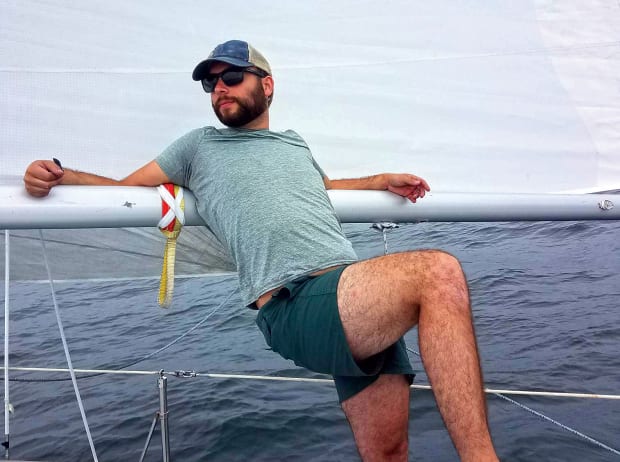
Group Ownership
Conor O’Neil’s path to boat ownership started with an agreement between some friends when they were all still undergrads.“It was actually something we had discussed in college, that if we all ended up in the same place after graduating, we would buy a boat together,” Conor says, and sure enough, once they were all out in the “real world,” so to speak, and living in the Newport area, the group bought a J/80, named it Party Tree and got to work.
“We ended up finding this boat for what we could afford,” he says. “It’s a decent one-design boat, and there were enough parts and stuff to get going. So we bought it and have been racing it. This will be our fifth season now.”
Planning out buying the boat was the first task, which took about two years to complete. “There were a lot of logistics that went into the planning for it, we wrote it all down. How much is this going to cost? What’s our budget going to be every year? Can we afford that? After that we actually wrote up an ownership contract, writing out how we’re going to handle owning the boat, and how the funds are gonna work. Here’s what happens if somebody wants to get out of the boat, all that sort of stuff.”
As for the boat, Conor says it works out for the team pretty well, with a four to five-person crew and four owners. The team also knew in advance who worked best where having spent a season chartering a J/22. In terms of keeping it all together, Conor says he couldn’t imagine having to do it all as one person.
“With the four of us, we have somebody who is responsible for land logistics when we’re at an event, where do we stay? We have somebody who’s responsible for where the boat is, how we get to the race course and all the regatta logistics. We have somebody who’s in charge of maintenance and things like that. We all share the things that need to get done to accomplish those tasks. But there’s somebody in charge of each one of those things.”
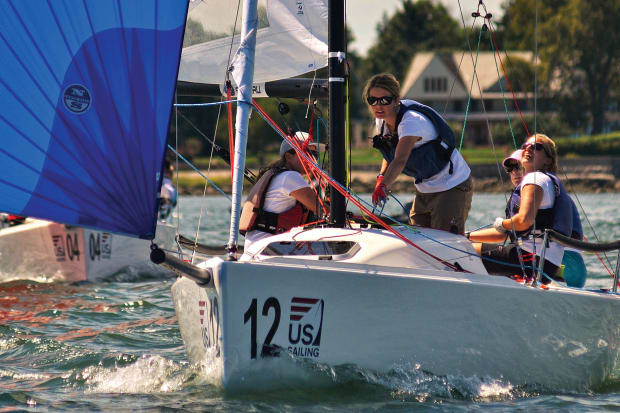
Conor says he thinks sharing a boat like this is one of the best ways to move from college sailing to post-college sailing. It’s also a good way to keep competitive sailing young. That said, he doesn’t necessarily think it is the best way to get into sailing if you’ve never really done it before. “What we’ve done isn’t the best way to go about it as a new sailor,” he explains. “The big thing to do first is finding out if you actually enjoy it before committing to this level financially.”
These young folks have found creative ways to get and stay involved with the sport despite cost and other barriers, but living aboard, buying with friends, joining a community sailing center and getting a job in the industry are just a few of the many options for getting out on the water. Plenty of racing boats, for example, are in need of crew, so try checking out your local racing fleet’s digital or physical message boards, or maybe try e-mailing the fleet captain. Similarly, many skippers are in need a of delivery crew and will be happy to train you if you can be available at short notice or for a longer passage. Or, if you’re a confident sailor and you’d rather be in charge of your own trip, you can try joining a membership sailing club Sailtime, which offers fleets of boats across the Great Lakes and on both the East and West coasts. Whether you can afford to shell out some cash or you’re looking to get on the water for free (or even save/make some money), there’s no shortage of options for getting involved.
Getting Gen Z on the Racecourse
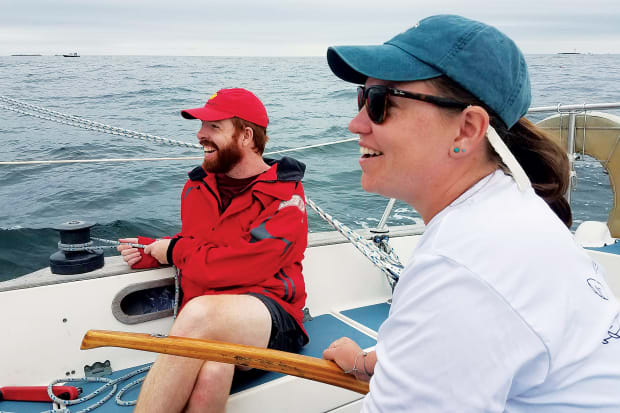
Photo courtesy of Lydia Mullan
Keeping young sailors involved in racing means bridging the gap between youth programs, which are often solely focused on dinghy sailing, and bigger boats, not an easy thing. With this in mind, Newport, Rhode Island, sailor Tim Grimes has been doing his best to come up with some news ways to get more young people into the local big boat racing scene. Working with clubs in the area, for example, he has created a rating system whereby boats with an average crew age of 20 or below get time assistance during racing. “For each age group, like if the average age is 15, they’ll get a 20-second handicap where they get an extra 20 seconds per mile,” he says. The lower the age, the more time the boat gets per mile. Another program in the area, the MudRatz sailing team, has an offshore program expressly designed to introduce big boat sailing to teenagers and young adults, with the program including overnight regattas and races. It also organizes weekend clinics to learn more about offshore sailing.
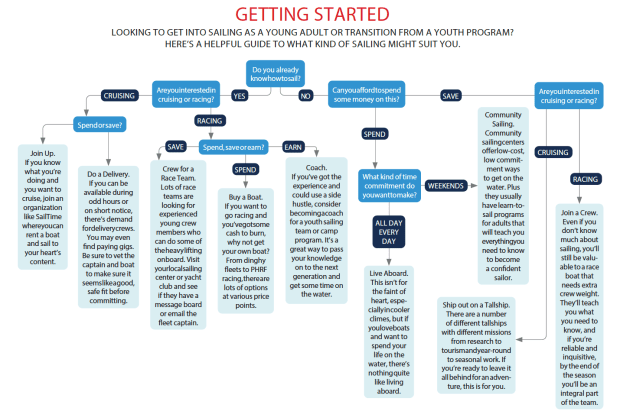
July/August 2022








